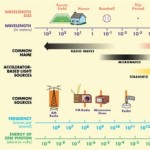- This topic has 16 replies, 8 voices, and was last updated 7 years, 10 months ago by
 devendra Kalra.
devendra Kalra.
-
AuthorPosts
-
-
May 1, 2016 at 6:56 am #38700
 mohammed ridha al-shamaptiParticipant
mohammed ridha al-shamaptiParticipantHi
I want to know the working principle of the circle (CW laser), What are the components of the inner circle, Any source or book.
please helpGreetings
-
May 1, 2016 at 9:45 am #38701
 MHD NAParticipant
MHD NAParticipantHi mohammed;
it is not called circle laser,it is called continuous wave laser so the most important parameter is wavelength and there are many other important parameters.
i hope to be benefited to you. -
May 1, 2016 at 10:01 am #38704
 mohammed ridha al-shamaptiParticipant
mohammed ridha al-shamaptiParticipantHi MHD NA
Thank you, knew that, but can you help me how to generate this type of laser?
Greetings
-
May 1, 2016 at 4:01 pm #38716
 love kumarParticipant
love kumarParticipantLasers can be divided into three main categories: continuous wave (CW), pulsed and ultrafast.
As their name suggests, continuous-wave lasers produce a continuous, uninterrupted beam of light, ideally with a very stable output power. The exact wavelength(s) or line(s) at which this occurs is determined by the characteristics of the laser medium. For example, CO2 molecules readily lase at 10.6 µm, while neodymium-based crystals (like YAG or vanadate) produce wavelengths in the range between 1047 and 1064 nm. Each laser wavelength is associated with a linewidth, which depends on several factors: the gain bandwidth of the lasing medium and the design of the optical resonator, which may include elements to purposely narrow the linewidth, like filters or etalons.
If a laser can simultaneously produce different lines, the first step in determining the operating wavelength is to use cavity mirrors that are highly reflective only at the desired wavelength. The low reflectivity of the mirrors at all the other lines will prevent these from reaching the threshold for laser action. However, even a single laser line actually covers a range of wavelengths. For example, laser diodes produce light over a wavelength range of several nanometers corresponding to their “gain bandwidth.”
The specific wavelengths of the output beam within this gain bandwidth are determined by the longitudinal modes of the cavity. Figure 4 shows the behavior of a two-mirror cavity, the most basic design. To sustain gain as light travels back and forth between the mirrors, the waves must remain in phase and “reproduce” their wave pattern, which means that the cavity round-trip distance must be an exact multiple of the wavelength
Nλ = 2 × Cavity Length,
where λ is the laser wavelength and N is an integer called the mode number. This is usually a very large integer, since the wavelength of light is so much smaller than a typical cavity length. In a high-power laser diode, for example, the IR output wavelength is 0.808 μm, yet the cavity length may be 1 mm, so that even in a very small laser resonator, N is ~2500. Wavelengths that satisfy this resonance equation are called longitudinal cavity modes [from edu.photonics]
-
May 2, 2016 at 2:45 am #38726
 mohammed ridha al-shamaptiParticipant
mohammed ridha al-shamaptiParticipantThank you so much love kumar
Thanks for help
Greetings
-
-
May 2, 2016 at 3:41 am #38729
 Aadil RazaParticipant
Aadil RazaParticipant-
May 6, 2016 at 3:45 am #38948
 mohammed ridha al-shamaptiParticipant
mohammed ridha al-shamaptiParticipantHi aadilqau
Thank you very much for the help
Regards
-
-
May 2, 2016 at 10:11 am #38738
 Rajguru M. MohanParticipant
Rajguru M. MohanParticipantHi mohammed ridha al-shamapti,
As we know that CW Laser Generates a continuous wave (CW) optical signal.
The laser phase noise is modeled using the probability density function:
f(delta Phi) = 1/(2*pi*sqrt(delta f *dt)* exp.(- delta Phi^2/4*pidelta f *dt)
where delta Phi is the phase difference between two successive time instants and dt is the
time discretization. A Gaussian random variable for the phase difference between two
successive time instants with zero mean and a variance equal to 2*pi* sqrt(delta f) has been
assumed, with as the laser line-width (which is equivalent to the full width half
maximum (FWHM) of the laser power spectrum).As The term “laser” is an acronym for (L)ight (A)mplification by
(S)timulated (E)mission of (R)adiation. To understand the laser, one
needs to understand the meaning of these terms. The term “light”
is generally accepted to be electromagnetic radiation ranging from
1 nm to 1000 mm in wavelength. The visible spectrum (what we see)
ranges from approximately 400 to 700 nm. The wavelength range
from 700 nm to 10 mm is considered the near infrared (NIR), and
anything beyond that is the far infrared (FIR). Conversely, 200 to
400 nm is called ultraviolet (UV); below 200 nm is the deep ultraviolet
(DUV).Thanks,
-
May 6, 2016 at 3:42 am #38946
 mohammed ridha al-shamaptiParticipant
mohammed ridha al-shamaptiParticipantHi Rajguru M. Mohan
Thank you very much for the help
Regards
-
-
May 2, 2016 at 10:14 am #38739
 Rajguru M. MohanParticipant
Rajguru M. MohanParticipantHi mohammed ridha al-shamapti,
The principle of a laser is based on three separate features: a) stimulated emission within an amplifying medium,
b) population inversion of electronics and c) an optical resonator.According to the quantum mechanics, an electron within an atom or lattice can have only certain values of energy, or energy levels.
There are many energy levels that an electron can occupy, but here we will only consider two.
If an electron is in the excited state with the energy E2 it may spontaneously decay to the ground state, with energy E1, releasing the difference in energy between the two states as a photon.
This process is called spontaneous emission, producing fluorescent light.
As we have to know Unique properties of lasers
Lasers range in size from tiny diode lasers to large systems the size of a football field. All of these have three basic properties in common, which separate lasers from ordinary light sources:1.Monochromaticity: conventional light sources emit light consisting of a broad range of wavelengths (i.e. colours); a laser, on the other hand, emits only a very narrow range of wavelengths.
2.Directionality: conventional light sources, like a light bulb, emit light in all directions, while lasers can emit light that spreads (‘diverges’) only very little with distance. However, all laser beams eventually diverge as they move through space.
3.Coherence: Some consider coherence to be the most fundamental property of laser light, i.e. where all parts of the electromagnetic waves are in phase.
All laser are working on same principle either three or four levels.
Thanks,
-
May 4, 2016 at 11:15 am #38835
 Hamza Ali Abbas KhanParticipant
Hamza Ali Abbas KhanParticipantHello,
as already quoted that Lasers can be divided into three main categories: continuous wave (CW), pulsed and ultrafast. Continuous-wave lasers produce a continuous, uninterrupted beam of light, ideally with a very stable output power. The exact wavelength(s) or line(s) at which this occurs is determined by the characteristics of the laser medium. For example, CO2 molecules readily lase at 10.6 µm, while neodymium-based crystals (like YAG or vanadate) produce wavelengths in the range between 1047 and 1064 nm. Each laser wavelength is associated with a linewidth, which depends on several factors: the gain bandwidth of the lasing medium and the design of the optical resonator, which may include elements to purposely narrow the linewidth, like filters or etalons.Hope this helps you.
Thanks -
May 4, 2016 at 11:15 am #38836
 Hamza Ali Abbas KhanParticipant
Hamza Ali Abbas KhanParticipantAlso i want to add that A laser that produces multiple longitudinal modes has a limited coherence – different wavelengths cannot stay in phase over extended distances. Applications such as holography, which demand excellent coherence, benefit from using a single-longitudinal-mode laser. For some laser types with a narrow gain bandwidth, single-mode output is achieved with a very short resonant cavity; this makes the mode spacing larger than the gain bandwidth, and only one mode lases. Generally, though, a filtering element that preferentially passes only one mode is inserted into the cavity. The most common type of filter is called an etalon. Using a number of sophisticated design enhancements, it is possible to restrict the linewidth of a laser to less than 1 kHz, useful for scientific interferometric applications.
Hope you find this helpful.
-
May 6, 2016 at 3:47 am #38949
 mohammed ridha al-shamaptiParticipant
mohammed ridha al-shamaptiParticipantHI Hamza Ali Abbas Khan
Thank you very much for the help
It’s very helpful thanks againRegards
-
-
May 4, 2016 at 12:19 pm #38841
 umer ashraf waniParticipant
umer ashraf waniParticipanthttps://www.google.co.in/url?sa=t&rct=j&q=&esrc=s&source=web&cd=23&cad=rja&uact=8&ved=0ahUKEwiN4NS66cDMAhWQHo4KHf7aBO04FBAWCB4wAg&url=https%3A%2F%2Friunet.upv.es%2Fbitstream%2Fhandle%2F10251%2F17801%2FtesisUPV3953.pdf%3Fsequence%3D1&usg=AFQjCNGKS5ERMEPt4YlTLuVspCbNFElKmA&sig2=69llXOkvjSy_PuGWYNqccA&bvm=bv.121099550,d.c2E
https://www.google.co.in/url?sa=t&rct=j&q=&esrc=s&source=web&cd=3&cad=rja&uact=8&ved=0ahUKEwi4yoSV6cDMAhXFBI4KHZQuBhkQFgguMAI&url=http%3A%2F%2Ffas.org%2Fman%2Fdod-101%2Fnavy%2Fdocs%2Flaser%2Ffundamentals.htm&usg=AFQjCNGXuyCFu3nlrCS7W2g0AfNXBDVioQ&sig2=aGZcqKZdUF8U6nHnrfr2Ag
https://www.google.co.in/url?sa=t&rct=j&q=&esrc=s&source=web&cd=4&cad=rja&uact=8&ved=0ahUKEwi4yoSV6cDMAhXFBI4KHZQuBhkQFgg0MAM&url=http%3A%2F%2Ffile.lasersaur.com%2Fdocs-thirdparty%2FLasers.pdf&usg=AFQjCNHPZ_Wl11wcuRlksKXJVxe5iCOk-g&sig2=ogBCHm8Ek-co27qEENhp1w
https://www.google.co.in/url?sa=t&rct=j&q=&esrc=s&source=web&cd=6&cad=rja&uact=8&ved=0ahUKEwi4yoSV6cDMAhXFBI4KHZQuBhkQFghCMAU&url=http%3A%2F%2Foptiwave.com%2Fforums%2Ftopic%2Fcw-laser-2%2F&usg=AFQjCNFJZgmW-f2OtWxnW4XThDjGQHwA1A&sig2=VS8FMun6Whp2O8o_RnhRLA
https://www.google.co.in/url?sa=t&rct=j&q=&esrc=s&source=web&cd=10&cad=rja&uact=8&ved=0ahUKEwi4yoSV6cDMAhXFBI4KHZQuBhkQFgheMAk&url=http%3A%2F%2Fwww.springer.com%2Fcda%2Fcontent%2Fdocument%2Fcda_downloaddocument%2F9783642235641-c1.pdf%3FSGWID%3D0-0-45-1296044-p174192760&usg=AFQjCNGyoOLq2Xys0gYv-BOBVAnHNR4vkQ&sig2=00dK0wRMJ_c9HZjUSd-_kQ
https://books.google.co.in/books?id=JxASQpi0LXoC&pg=PA581&lpg=PA581&dq=working+principle+of+(CW+laser)&source=bl&ots=-lkvOiuXNA&sig=hf4uIHdLv5iVrZ8NkzEQAVBy9HM&hl=en&sa=X&ved=0ahUKEwjooJWx6cDMAhWCU44KHSSiCIE4ChDoAQgzMAM-
May 6, 2016 at 3:29 am #38943
 mohammed ridha al-shamaptiParticipant
mohammed ridha al-shamaptiParticipantHI umer ashraf wani
Thank you very much for the help
It’s very helpful articles thanks againRegards
-
-
May 5, 2016 at 4:54 am #38879
 Karan AhujaSpectator
Karan AhujaSpectatorhi all
i agree with all the replies.i want to add that Most applications of CW lasers require that the power be as stable as possible over long time periods (hours or weeks), as well as over short time durations (microseconds), depending on the specific application. To ensure this stability also in the presence of varying environmental situations like temperature, vibration and the aging of the laser itself, microprocessor control loops are implemented. For example, a diode-pumped Nd laser will have servos to adjust temperature and output power of the pump diodes to maintain stable output power from the resonator. In addition, other servos may control the perfect alignment of the resonator mirrors.
Regards
-
-
AuthorPosts
- You must be logged in to reply to this topic.

